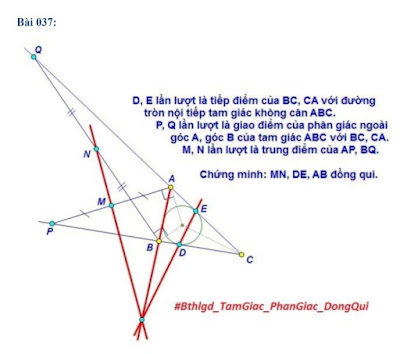"The scientific principles that man employs to obtain the foreknowledge of an eclipse, or of any thing else relating to the motion of the heavenly bodies, are contained chiefly in that part of science that is called trigonometry, or the properties of a triangle, which, when applied to the study of the heavenly bodies, is called astronomy; when applied to direct the course of a ship on the ocean, it is called navigation; when applied to the construction of figures drawn by a ruler and compass, it is called geometry; when applied to the construction of plans of edifices, it is called architecture; when applied to the measurement of any portion of the surface of the earth, it is called land-surveying. In fine, it is the soul of science. It is an eternal truth: it contains the mathematical demonstration of which man speaks, and the extent of its uses are unknown." —Thomas Paine
Unlike the laws of sines, cosines and tangents, which are very well known, the half-angle formulas seem (although they appear timidly in the mathematical literature) not to enjoy the same popularity. Thus, while there are entire chapters devoted to the law of sines, cosines, and tangents and their applications, there is not even a Wikipedia article on half-angle formulas. Right now you may be imagining this version of the half angle formulas
$$\sin{\frac{\alpha}{2}}=\pm\sqrt{\frac{1-\cos{\alpha}}{2}}\qquad\qquad\cos{\frac{\alpha}{2}}=\pm\sqrt{\frac{1+\cos{\alpha}}{2}},$$
that do appear in the textbooks of the first trigonometry courses (at least with the one I studied). But actually I mean these
$$\sin^2{\frac{\alpha}{2}} = \frac{(s-b)(s-c)}{bc}\qquad\qquad\cos^2{\frac{\alpha}{2}}= \frac{s(s-a)}{bc},\tag{1}$$
where $a$, $b$, and $c$ are the sides of a triangle, $\alpha$ is the angle opposite side $a$, and $s$ is the semiperimeter. I found the furthest reference to these formulas in a conversation posted online between Conway and Doyle, where Conway uses them to prove Heron's formula and later claims to have taken it from a sequel by Casey.
I discovered $(1)$ independently trying to prove the law of cosines by contradiction. When I realized that they were known, I tried to generalize them and I got this
$$\sin^2{\frac{\alpha}{2}}=\frac{(s-a)(s-d)}{ad+bc}\qquad\qquad \cos^2{\frac{\alpha}{2}}=\frac{(s-b)(s-c)}{ad+bc},\tag{2}$$
where $a$, $b$, $c$ and $d$ are the sides of a cyclic quadrilateral, $s$ is semiperimeter and $\angle{DAB}=\alpha$.
Before discovering the conversation between Conway and Doyle, I had been excited that I had found an original proof of Heron's formula using $(1)$. When I found $(2)$, I thought that by analogous reasoning I could prove Brahmagupta's formula. So it was. But in a geometry forum someone referred me to an ancient Greek book that contained $(2)$. I then sent my proof of Brahmagupta's formula to Martin Josefsson who referred me to Casey's book "A Treatise On Plane Trigonometry" where my proof already appeared. But I didn't give up and tried to generalize $(2)$ getting this
$$ad\sin^2{\frac{\alpha}{2}}+bc\cos^2{\frac{\gamma}{2}}=(s-a)(s-d)\qquad\qquad bc\sin^2{\frac{\gamma}{2}}+ad\cos^2{\frac{\alpha}{2}}=(s-b)(s-c),\tag{3}$$
where $a$, $b$, $c$ and $d$ are the sides of a general quadrilateral, $s$ is semiperimeter, $\angle{DAB}=\alpha$ and $\angle{BCD}=\gamma$. Surprisingly, $(3)$ also generalizes the Pythagorean identity! Take a look at GeoDom - A generalization of the Pythagorean trigonometric identity.
Bretschneider's formula is known to be a generalization of Heron's and Brahmagupta's formulas. Naturally, I wondered if I could generalize Casey's proof of Brahmagupta's formula using $(3)$ and thus derive Bretschneider's formula. And I did it. I sent my formulas in $(3)$ and my proof of the Bretschneider's formula to Josefsson (among many other mathematicians) and he told me this:
"I like your paper, especially how you put these important formulas in a single framwork. I cannot say that I remember seeing the identities (4) and (5) anywhere else before."
Where identities (4) and (5) are the identities $(3)$ in this post.
And then he said:
"Even though much has already been written about these formulas, the ideas for proving Bretschneider' formula and the area of a bicentric quadrilateral are novel as far as I know. I hope you get your paper published."
I decided to write an article about these formulas called "Two Identities and their Consequences" which was published in MATINF.
In almost three years of exploring possible applications of $(1, 2, 3)$, this is what I have found:
Using $(1, 2)$ we can also derive (you can see most of the proofs here):
- The law of cosines
- The law of sines
- The law of tangents
- Stewart's theorem
- Compound angle formulas
- Mollweide's formula
- The product $AI\cdot{BI}\cdot{CI}$
- The bisector length formula
- Mahavira's formulas
- Zelich's lemma
- Euler's triangle inequality
- Yun’s Inequality (Josefsson)
Other unnamed identities and inequalities:
- $\tan{\frac{\alpha}{2}}\tan{\frac{\beta}{2}}+\tan{\frac{\alpha}{2}}\tan{\frac{\gamma}{2}}+\tan{\frac{\beta}{2}}\tan{\frac{\gamma}{2}}=1$
- $r=4R\sin{\frac{\alpha}{2}}\sin{\frac{\beta}{2}}\sin{\frac{\gamma}{2}}$
- $s=4R\cos{\frac{\alpha}{2}}\cos{\frac{\beta}{2}}\cos{\frac{\gamma}{2}}$
- $\sin{\frac{\alpha}{2}}\sin{\frac{\beta}{2}}\sin{\frac{\gamma}{2}}\le\frac{1}{8}$
- $\sum_{cyc}\tan\frac\alpha2\tan\frac\beta2\geq4$ for a cyclic quadrilateral
- I could go on...
The formulas $(1, 2, 3)$ explain the Heron-Brahmagupta-Bretschneider development better than I have seen anywhere else. This made me wonder what would happen if I analogously applied the half-angle formulas to formulas where half-angles explicitly appeared, such as Mollweide's (rather Newton's) formula or the law of tangents. This is how these generalizations arose:
When questioning Martin Josefsson about the originality of these generalizations, this is what he said:
"As far as I can recall, I have not seen any of them, at least not in modern books or papers, and even if some of them where to be found in an old text, they are at least not well known, and deserve to be wider known."
And Alexander Mednykh said:
"I never saw these results before. Certainly, it is interesting to find a no-Euclidean generalization of these results."Apart from the proof of the Bretschneider's formula, I haven't found any other applications for $(3)$.
Interestingly, half angles seem to be everywhere: from circle angle theorems to the Weierstrass substitution in Integral Calculus. Even when Viète derived his formula for $\pi$ using an infinite product, he started by writing $\sin{x}=2\sin{\frac12x}\cos{\frac12x}$.
Some comments:
Thibaut Demaerel, from Leuven University, commented:
Check out the details of his proof at MathSE.
Dr. James Cook commented at Math Educators SE (where due to the controversy that my publication generated I decided to delete it):
Related material













